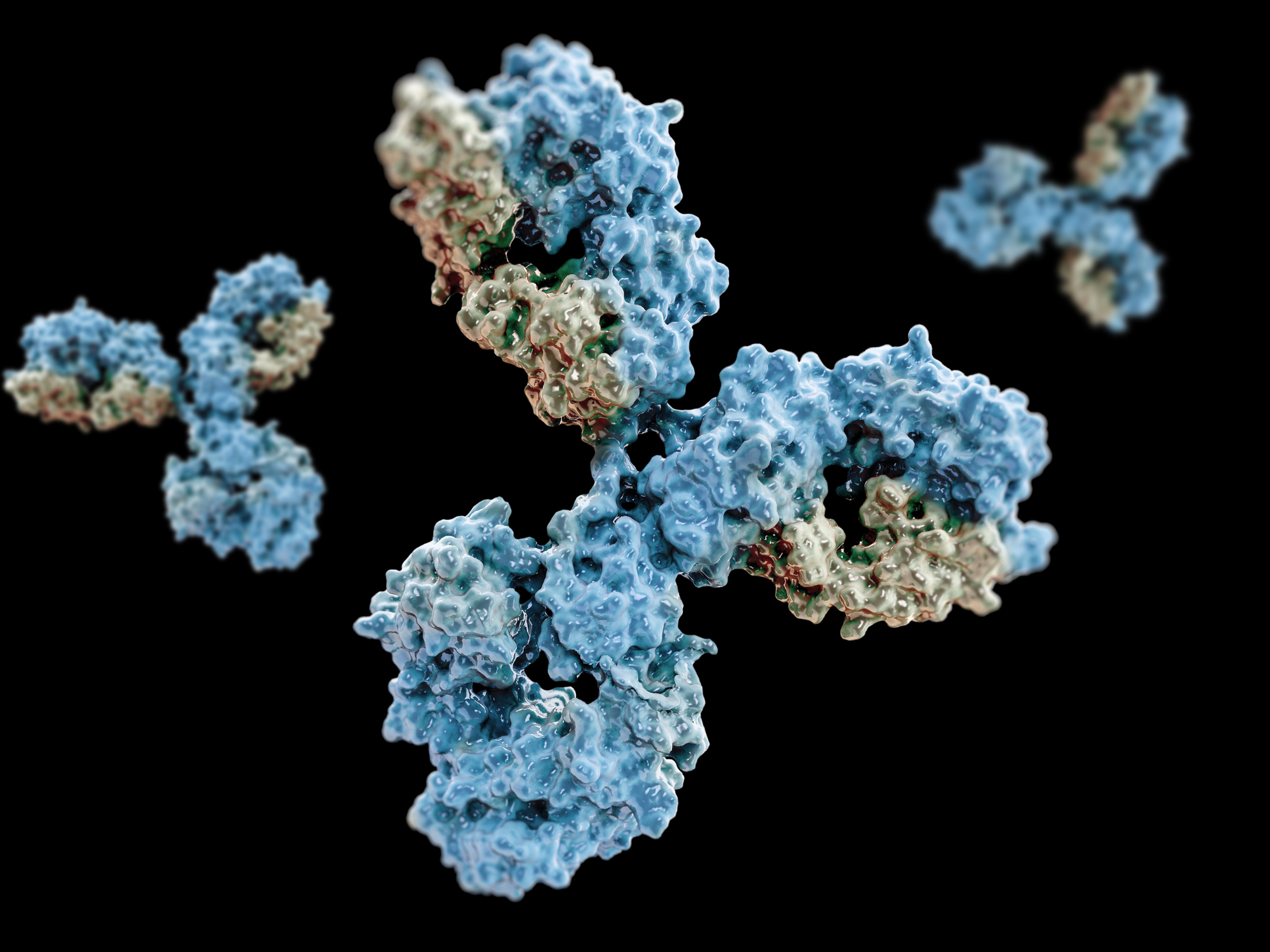Introducing the Development and Clinical Landscape of Bi and Multispecific Antibodies

The therapeutic use of antibodies has fast become the backbone of the majority of immunotherapies. That’s because of their natural ability to bind to specific antigens, opening the doors for therapeutic action against pathogens.
When it comes to cancer, bispecific antibodies can use this specific targeting twice to latch onto both tumour cells and immune cells at the same time, bringing them together to induce an immune response against the cancer.
The bispecific model is advantageous over a typical monospecific antibody as it is able to attack cancer both directly (via antibody binding) and indirectly (via recruiting immune cells). T cells are the most common type of immune cell for a bispecific to target, as they are able to recognise malignancy and kill it. Over half of the bispecific molecules which are approved focus on indications of solid and blood cancer, however there are others which focus on diseases like diabetic macular edema.
RELATED:
- Multispecific Antibody Development: Interview with Yue Liu, President and Founder of Ab Therapeutics
- Bispecific Antibody Format: Interview with Laura von Schantz, Chief Technology Officer, Alligator Biosciences
- European Commission Approves Genmab’s Subcutaneous Bispecific Antibody Tepkinly
The current landscape for bispecifics stands at twelve approvals by various authorities, with over 450 others also in clinical development. The list of FDA approvals in this space is currently as follows: blinatumomab, emacizumab, amivantamab, tebentafusp, faricimab, teclistamab, mosunetuzumab, epcoritamab, and glofitama.
Blinatumomab was the first bispecific to receive approval in 2014; it targets CD19 (expressed on B cells) and CD3 (expressed on T cells). This bispecific T cell engager (BiTE) is therefore used as a second-line treatment for Philadelphia chromosome-negative relapsed or refractory acute lymphoblastic leukemia.
Going Further with Multispecifics
So, a bispecific antibody has two ‘hands’ that reach out to engage with separate targets. But what happens when you take this idea further? Are their antibodies that employ three or more hands for the targeting of multiple antigens?
The term "multispecific antibodies" is a broader category that includes antibodies designed to interact with more than two targets. These antibodies can have more than two binding sites, allowing them to engage with multiple targets simultaneously.
The design of multispecific antibodies can vary widely, and they may incorporate different structures, such as tandem single-chain variable fragments (scFvs) or other engineered domains. Multispecific antibodies can be used for a variety of purposes, including targeting multiple pathways involved in a disease, enhancing specificity, or optimising therapeutic effects.
Molecules in the clinical landscape of multispecific antibodies can roughly be placed into three categories: IgG-like with potential for heterodimeric binding; IgG-modified where the heterodimer pairing is enhanced using mutation; and fragment-based which are fragments of antibodies which are combined together to result in multispecific binders.
The challenges for multispecific development, like the development of all antibodies, lie in their safety, efficacy, and manufacturability. Multispecifics use more than two types of chains, heavy and light, and when they are mismatched, can produce unwanted side products. Therefore, during their development, a variety of techniques must be employed to achieve the correct matching of these chains in the finished product.
Furthermore, among the production, storage, and stability issues that are encountered in their development is the liability of using linkers in antibodies that do not belong to the traditional antibody format. Therefore, when developing more complex multispecifics, the stability of these linkers must be considered carefully, lest the product degrade too quickly in the patient or pre-clinical model.
In conclusion, the rise of bispecific antibodies has revolutionised immunotherapies, particularly in cancer treatment, by simultaneously targeting tumour cells and recruiting immune cells for a dual therapeutic approach. Looking beyond bispecifics, multispecific antibodies, designed to engage with more than two targets, offer a broader approach with diverse structures. However, challenges in safety, efficacy, and manufacturability, especially concerning chain matching and linker stability, underscore the complexity of developing these advanced therapeutic molecules.
See the upcoming events in Oxford Global’s Immuno series here.
Get your weekly dose of industry news?here?and keep up to date with the latest?‘Industry Spotlight’ posts.?For other Immuno content, please visit the?Immuno Content Portal.









